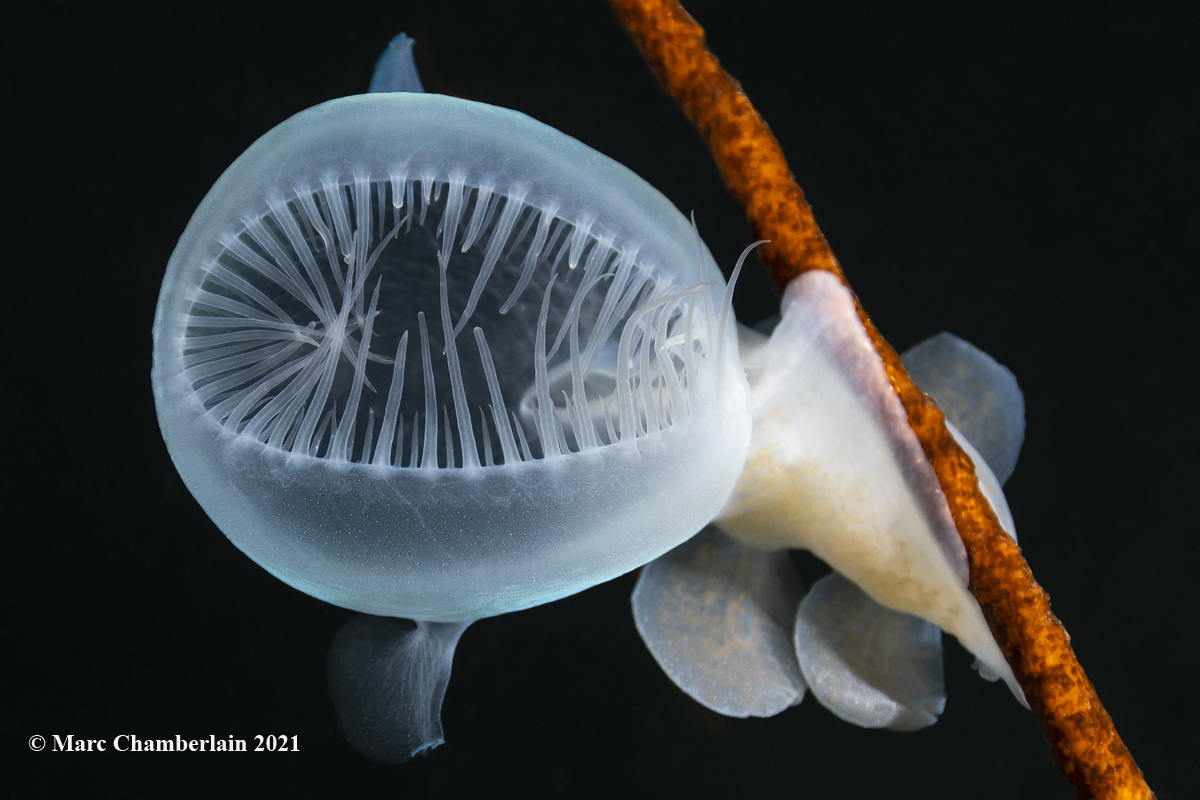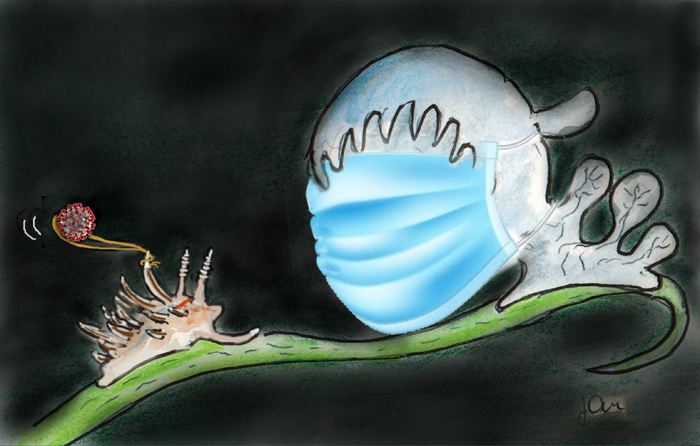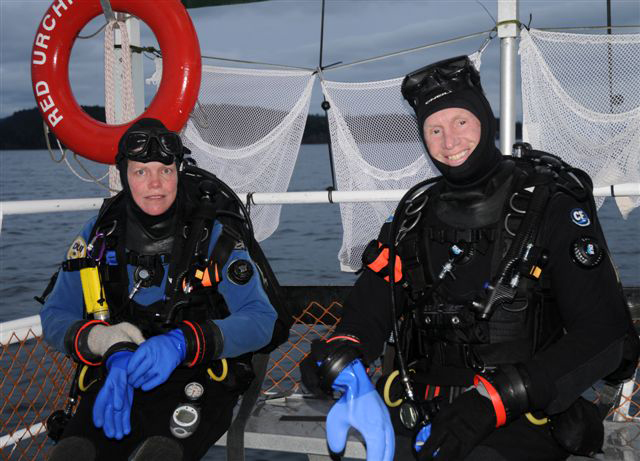 |
Image courtesy of Marc Chamberlain
British Columbia, Canada
Image courtesy of Jan Kocian |
Melibe leonina (Gould, 1852) We have run Melibe leonina as a BOW several times before, simply because it is a fascinating sea slug. After seeing Jan's carton of Melibe masked up, we just had to revisit it again. I think Jan's work really demonstrates what we are all going through having to wear a mask constantly. For Melibe it would mean a complete life style change. M. leonina belongs to the family Tethydidea. All members have a well developed oral hood ringed with numerous elongate papillae. It is the only nudibranch group specializing on feeding on crustaceans, as well as larval fish. The hood is cast forward much like a Hawai'ian fisherman throws his net. This species has two rings on papillae on the edge of the hood, the more lateral being many times longer, than those in the inner row. These papillae not only sense and locate potential prey, but once the prey is captured, the papillae inter-digitate to trap the prey securely within the hood, similar to how the insect eating plant - the Venus flytrap does. Wearing a mask makes this quite impossible. One thing for sure is that the flat sail shaped rhinophores are perfect for securing a mask. This species is often found literally in herds numbering in the hundred's as seen in another rather spectacular photo by Marc! I guess they don't believe in social distancing. If this specialized feeding apparatus isn't enough to make this critter special - Hey, it's an excellent swimmer, undulating its body from side to side to escape protagonists. Try that with a mask on. |
At the northern-most reaches of its range, specimens may reach 6 inches in length, much larger than more southern divers are used to seeing. Diver's see this in many sea slugs species in Washington and British Columbia. The phenomenon is referred to as "Bergmann's Law." Unfortunately Bergmann wrote his principle based on longitudinal differences in size in insects and birds. Most of these terrestrial species being represented by larger size individuals as you go farther north. The Law has yet to be tested for marine invertebrates, but from what I have seen in numerous nudibranch species up here, the Law may well apply to them also.
Dave Behrens
Sammamish, WA 98074
Mar., 2021
Send Dave email at davidwbehrens@gmail.com
Michelle,and Marc Chamberlain gearing up at
Andy Lamb's Cedar Beach resort
in preparation for a dive in the southern Gulf Islands off SE Vancouver Island.
Photo courtesy of Neil McDaniel
 |
Marc and Michelle Chamberlain reside in the Pacific Northwest in Seattle, Washington where they have lived for the last 15 years. They enjoy cold water diving and take advantage of their location to dive Puget Sound, Hood Canal, the San Juan Islands and the Olympic Peninsula all in Washington as well as multiple locations in British Columbia and southeast Alaska whenever possible. They also travel abroad (pre-pandemic), often combining land and water opportunities as in a trip to New Zealand, where they did extensive bird watching and hiking in addition to diving the Poor Knight's Islands (which I am going to put on my places to visit list).
Marc has a Nikon D500 in a Subal housing with 2 YS-D2 strobes and diffusers in addition to a variety of lenses. Marc in his time in San Diego was club Photographer of the Year so many times that I lost count! In fact Marc came to mind many summers ago during a trip on the Catalina Express from Dana Point. Due to a loading snafu, the bag containing my camcorders was stowed down below and therefore unavailable during the hop over to Catalina. Well, you guessed a Blue breeched about 50 feet off the boat and hung around for about 10 minutes for everyone onboard to get a shot. That is with the exception of yours truly! During the remainder of the voyage the only thought that came to mind was "if Marc has been onboard he would have been ready." That be the difference folks between those who dream and those who actually do it!
Send Marc email at marccchamberlain@gmail.com |

Attention all you Sluggers, and you know who you are! The NSSI 2nd edition is now available in ebook PDF and book form . The hard back version will become available Nov. 1st. Both will cost $65 (individually). You will need to jump through a few hoops to get the electronic version as pdf distribution is protected by Adobe ID!! Please read the following to enable reading your electronic purchase! This new 2nd Edition is updated and reorganized, including 185 new species. Among other features, the new edition includes additional photographs of species, an identification key, and an up-to-date classification reflecting the latest evolutionary relationships. The Indo-Pacific represents the largest expanse of tropical ocean in the world, stretching from the Indian Ocean coast of southern Africa and the Red Sea to the central Pacific of the Hawaiian Islands, Easter Island and the Marquesas. This region supports the most diverse marine fauna of any place in the world for most groups of marine organisms. The nudibranchs and sea slugs are no exception to this rule; there are about 3,000 described species of these organisms in the world and at least 40% of these have been found exclusively in the Indo-Pacific tropics. This book illustrates 2,138 Indo-Pacific nudibranchs and sea slugs, including many undescribed species.
|

|
